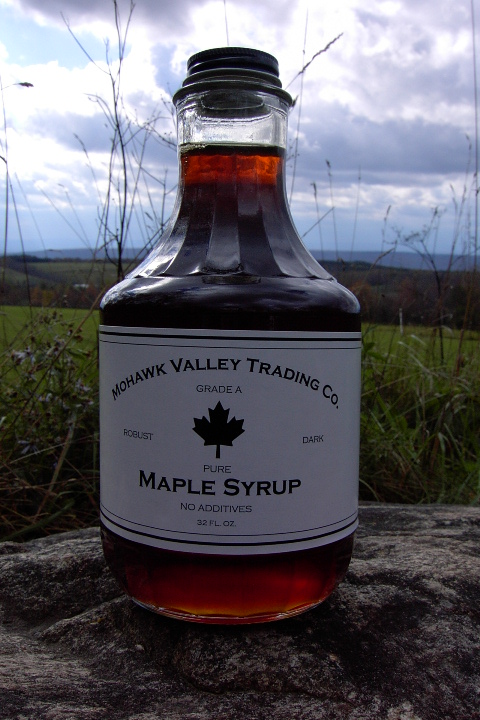MORRISVILLE, Vt.—The demand for maple syrup (楓糖漿) in China is growing steadily and Qingpin Wang, Ph.D., a professor of economics at the University of Vermont said “I look at the data from China and I see a lot of potential,”.
Professor Qingpin was a participant in the “State of the Maple Industry” panel discussion at the Vermont Maple Conference Week on Dec 10.
According to Wang, the data on maple sales in China from 2009 shows there was hardly any maple syrup sold there, however by 2021, it was up to 260 metric tons.
“That’s a lot of maple syrup,” Wang said.
The professor said he recently reached out to students in the China to go to grocery stores and see in what way maple syrup was being retailed, and out of all the grocery stores they visited, Wang’s students only found one that had maple syrup on the shelf.
“All the sales are online,” Wang said “We are in the early stage.”
He said as the country emerges as an export hot spot for maple syrup it will be important to help educate the Chinese on how to use syrup.
“In China they do not know how to include maple syrup in their cooking,” Professor Qingpin said. “It’s only been available there over the past couple of years.”
Wang also said the translation of maple syrup on the label does not effectively convey what the product actually is.
“The way the Chinese pronounce it, it does not sound attractive,” he said and maple is generally just labeled as ‘sugar’ and does not properly reflect its gourmet character. In addition, Chinese people are worried about obesity and may veer away from maple syrup if they only think of it as an added sugar.
Wang said the apple industry in Washington State had the same problem when they began exporting Red Delicious apples to China.
They had to change the name of the apple in translation, and the result was the Chinese now use the apples as gifts.
Wang said China will start importing more maple syrup from the United States and in increased volumes from Canada.
Next to raw honey, maple syrup is the most popular natural sweetener in North America and its production predates European colonization. Indigenous peoples from the northeastern part of North America were the first group known to produce maple syrup and maple sugar. Aboriginal oral traditions and archaeological evidence suggest that organic raw maple tree sap was being turned into syrup long before Europeans arrived. European settlers adopted the practice and advanced production methods.
Maple syrup is ranked or graded according to the United States, Vermont, or Canada scales based on its translucency and density. Sucrose is the most prevalent sugar in maple syrup and small amounts of Fructose and Glucose are also present. In Canada, syrups must be at least 66 percent sugar and be made exclusively from maple sap to qualify as maple syrup. In the United States, syrups must be made almost entirely from maple sap to be labeled as “maple”, small amounts of substances such as salt are allowed. “Maple flavored” syrups must contain real maple syrup but salt, chemical preservatives and defoaming agents are allowed.
The United States has its own grading standards. Syrup is divided into two grades: Grade A and Grade B. Grade A is further divided into three levels: Light Amber or Fancy, Medium Amber, and Dark Amber. The Vermont Agency of Agriculture Food and Markets grading system is similar and is roughly the same, especially for lighter syrups, but designates grades using letters: “AA”, “A”, etc. The Vermont grading system maintains a slightly higher standard of product density (measured on the Baumé scale). New Hampshire holds a similar standard, but does not have a separate state grading scale. The Vermont-graded product has 0.9 percent more sugar and therefore less water in its composition than US-graded. Commercial or Grade C syrup (syrup not for table use) is also produced under the Vermont system. Vermont inspectors strictly enforce syrup grading regulations, and will fine producers up to $1000 for incorrectly labeling syrup.
Extra Light and Grade A typically have the mildest maple flavor. Grade B is very dark with a strong maple flavor. The dark grades of syrup are preferred for cooking and baking but some specialty dark syrups are produced for table use. People who appreciate the strong maple flavor use Grade B exclusively. The US classification of maple syrup depends on its translucence. US Grade A Light Amber has to be more than 75 percent translucent, US Grade A Medium Amber has to be 60.5 to 74.9 percent translucent, US Grade A Dark Amber has to be 44.0 to 60.4 percent translucent, and US Grade B is any product less than 44.0 percent translucent.
The Canadian ranking system is overseen by the Canadian Food Inspection Agency (CFIA). Syrup is designated with one of three grades, each with several color classes. The grades are Canada No. 1, including Extra Light, Light, and Medium; No. 2 Amber; and No. 3 Dark or any other ungraded category. Producers in Ontario and Québec have the choice of following either provincial or federal grading guidelines. The grading systems in Québec and Ontario are slightly different from the federal. In Québec there are two categories (Number 1, with four color classes, and Number 2, with five color classes). Ontario’s producers have two “number” grades: 1, with three color classes; and 2, which is typically referred to as “Ontario Amber” when produced and sold in the province. A typical yield for a maple syrup producer will be between 25 and 30 percent of each of the #1 colors, 10 percent #2 Amber, and 2 percent #3 Dark.

